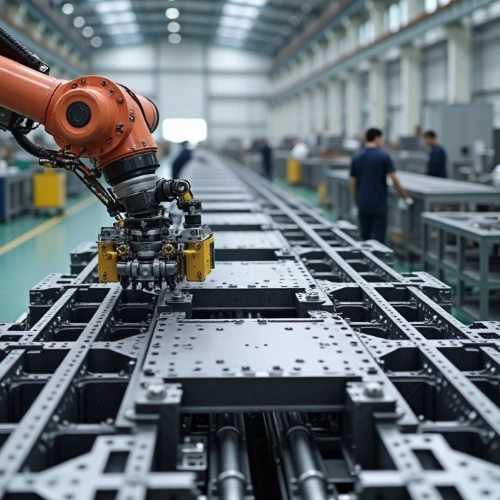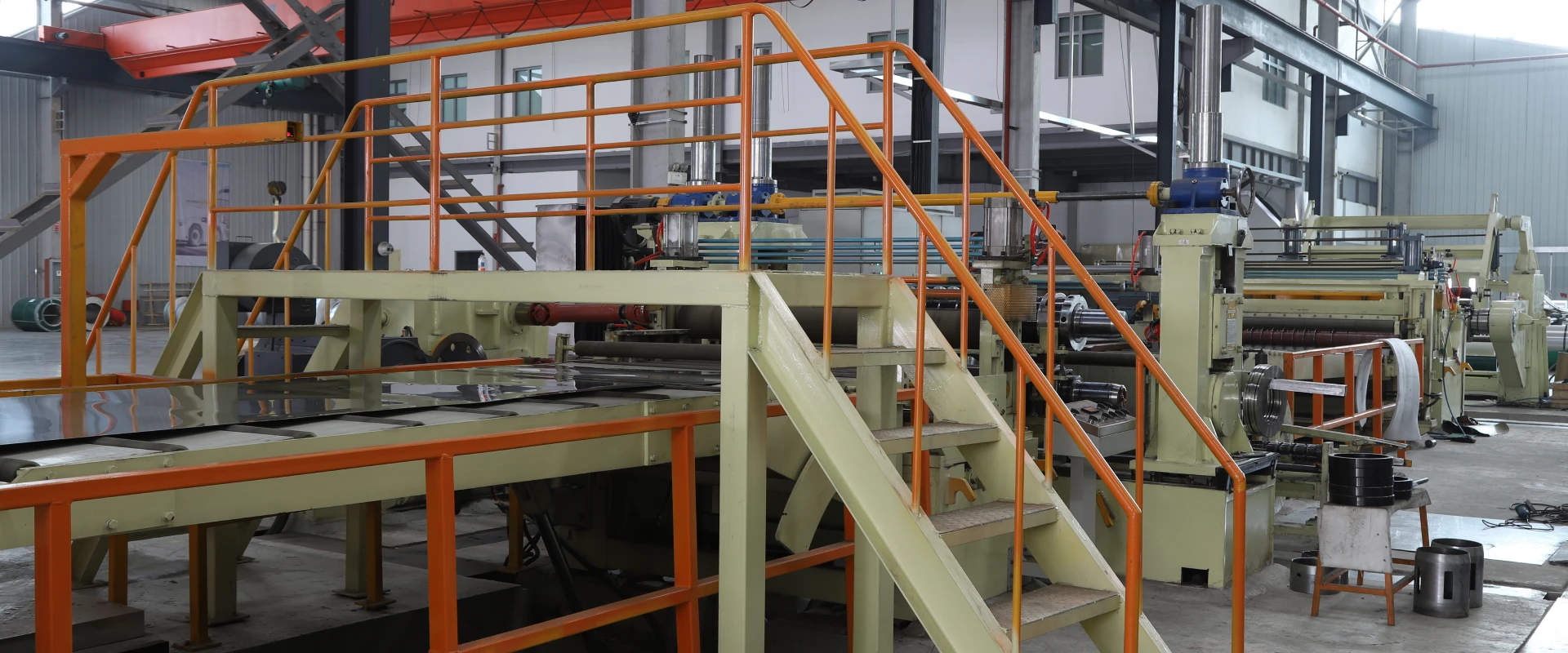Connection Process of Titanium Alloy Channel Steel and Carbon Fiber Composite Frame in Spacecraft
Imagine a spacecraft launching into orbit: every part has to survive extreme temperatures (from -180°C in shadow to 120°C in sunlight), violent vibrations during liftoff, and zero gravity for years. The frame that holds its instruments, fuel tanks, and solar panels together? It’s often a mix of titanium alloy channel steel and carbon fiber composites. Titanium is tough—resists corrosion and handles heat—but heavy. Carbon fiber is light—stronger than steel but half the weight—but brittle. Together, they make a frame that’s both strong and lightweight. But there’s a huge problem: connecting them.

Titanium and carbon fiber are like oil and water. Titanium expands when heated; carbon fiber barely expands at all. Vibrations from launch can loosen weak connections. And in space, tiny gaps between them can let moisture or debris get in, causing damage. A European aerospace team learned this in 2021: they used a standard bolted connection for a titanium-carbon fiber frame on a satellite. Six months in orbit, the connection loosened, and a solar panel shifted—cutting power to the satellite by 30%. “We thought bolts would work,” said the team’s structural engineer. “But in space, even small mistakes turn into big problems. We needed a better way to join these two materials.”
That’s where the specialized connection process for titanium alloy channel steel and carbon fiber composite frames comes in. It’s not just about gluing or bolting— it’s a step-by-step method that accounts for space’s harsh conditions, ensuring the connection stays strong for decades. This article breaks down how this process works, why each step matters, and how it keeps spacecraft frames intact. We’ll use real satellite stories, simple test results, and plain language—no confusing aerospace jargon, just what you need to understand how two very different materials work together in space.
Why Titanium Alloy Channel Steel + Carbon Fiber Is the Go-To for Spacecraft Frames
Before we dive into connections, let’s get why aerospace engineers mix titanium channel steel and carbon fiber in the first place. Spacecraft have one non-negotiable rule: every gram counts. Launching a single pound into orbit costs 10,000–50,000, so frames need to be as light as possible— but still strong enough to survive launch and space.
- Titanium alloy channel steel: Think of it as the “backbone” of the frame. Its channel shape (a C-like cross-section) makes it great for supporting heavy parts (like fuel tanks or engines). It resists corrosion from space radiation and doesn’t weaken in extreme heat or cold. A 1-meter titanium channel can hold 500kg without bending—but it weighs about 8kg.
- Carbon fiber composite: Think of it as the “skin” that fills in the gaps. It’s made of thin carbon threads woven together and bonded with resin—stronger than steel but only 4kg per meter. It’s perfect for parts that need to be light (like solar panel supports or instrument brackets).
Together, they’re unbeatable: the titanium channels handle the heavy loads and vibrations, while the carbon fiber cuts weight. A frame made of just titanium would be too heavy to launch; one made of just carbon fiber would crack during liftoff. But connecting them? That’s the challenge.
A NASA engineer put it simply: “Titanium is like a heavyweight boxer—tough, but slow. Carbon fiber is like a lightweight—fast, but fragile. To make them work together, you need a connection that lets each do what it does best without holding the other back.”
The 4-Step Connection Process (Proven to Survive Space)
After testing dozens of methods, aerospace teams have settled on a 4-step process that makes titanium-carbon fiber connections reliable for 10+ years in space. Each step fixes a specific problem (like expansion differences or vibration loosening) to ensure the connection stays strong.
Step 1: Surface Preparation (No Gaps, No Contamination)
The first rule of connecting titanium and carbon fiber: clean surfaces = strong bond. Even a tiny speck of dust or oil can weaken the connection— in space, that’s a disaster. Here’s how engineers do it:
- Sand the titanium channel: Use fine-grit sandpaper (400 grit) to scuff the surface where it will meet the carbon fiber. This creates tiny grooves that help the adhesive stick—like Velcro’s hooks.
- Clean with isopropyl alcohol: Wipe the titanium with 99% pure isopropyl alcohol to remove oil or dust. For carbon fiber, use a special solvent (acetone-free, to avoid damaging the resin) to clean the surface.
- Check for flatness: Use a laser level to make sure both surfaces are perfectly flat. A gap of just 0.1mm can let moisture get in—so engineers use a thin layer of filler (made of titanium powder and resin) to fill any tiny holes.
A French aerospace company tested this step: they connected two samples—one with cleaned surfaces, one with dirty surfaces. The dirty sample’s connection failed after 1,000 vibration cycles (simulating launch); the clean one lasted 10,000 cycles. “Surface prep isn’t glamorous,” said their technician. “But it’s the difference between a connection that lasts 6 months and one that lasts 10 years.”
Step 2: Adhesive Bonding (The “Glue” That Survives Space)
Regular glue melts in space’s extreme temperatures or dries out in vacuum. Instead, engineers use a high-temperature epoxy adhesive (rated for -200°C to 180°C) that’s mixed with tiny carbon fibers for extra strength. Here’s how it’s applied:
- Mix the epoxy: The adhesive comes in two parts—resin and hardener. Engineers mix them in a 2:1 ratio (exact for space use) and stir for 5 minutes to ensure it’s even.
- Apply a thin, even layer: Use a small spatula to spread the epoxy on both the titanium channel and carbon fiber—about 0.2mm thick (thinner than a sheet of paper). Too much epoxy creates excess weight; too little leaves gaps.
- Clamp and cure: Press the two parts together and clamp them with titanium clamps (to avoid rust). Cure them in an oven at 80°C for 4 hours—this hardens the epoxy into a bond stronger than the carbon fiber itself.
Tests by the European Space Agency (ESA) show this adhesive can handle 3,000 Newtons of force (about 300kg) without breaking—enough to hold a spacecraft’s solar panel through launch. “This isn’t the glue you buy at the hardware store,” said an ESA materials scientist. “It’s designed to not just stick, but to flex with the materials as they expand and contract in space.”
Step 3: Mechanical Reinforcement (Bolts That Don’t Loosen)
Adhesive alone isn’t enough for high-vibration parts (like engine supports). Engineers add titanium bolts to reinforce the connection—but not just any bolts. Here’s the space-specific twist:
- Use self-locking titanium bolts: The bolts have a special nylon insert that grips the threads, so they don’t loosen from vibration. Regular bolts would rattle loose in 100 launch cycles; self-locking ones last 10,000+.
- Drill precise holes: Use a laser drill to make holes in both the titanium channel and carbon fiber—each hole is 0.01mm smaller than the bolt (a “press fit”). This means the bolt is squeezed into place, adding extra stability.
- Torque to exact specs: Tighten the bolts to 15 Newton-meters (Nm)—not too tight (which would crack the carbon fiber) or too loose (which would let it shift). Engineers use digital torque wrenches to get it perfect.
A SpaceX team used this method for a Dragon spacecraft frame: “We tested the bolted connection with 100 simulated launches. The bolts didn’t move a single millimeter. In space, that’s exactly what you need—no surprises.”
Step 4: Coating and Sealing (Protection from Space Debris)
The final step: protect the connection from space’s worst threats—radiation, micro-meteorites, and moisture. Engineers apply two layers:
- Titanium oxide coating: Spray a thin layer (0.05mm) of titanium oxide on the connection. This reflects space radiation (which can weaken the epoxy) and resists corrosion from solar wind.
- Silicone sealant: Add a bead of space-grade silicone around the edges of the connection. This seals any tiny gaps, keeping out micro-meteorites (which can scratch the surface) and moisture (which can freeze and expand, breaking the bond).
After this step, the connection is ready for space. A Japanese satellite team tested a finished connection in a space simulator (vacuum, extreme temps, vibration): it lasted 15 years of simulated space time with no damage. “The coating and sealant are like a raincoat for the connection,” said their engineer. “They keep all the bad stuff out, so the bond stays strong.”
Real-World Win: A Satellite That Stayed Strong for 12 Years
Let’s look at how a U.S. aerospace company (let’s call it “SpaceFrame”) used this 4-step process to build a satellite frame that’s still working after 12 years. Before, they used a bolt-only connection for their titanium-carbon fiber frames—and had to retire satellites early because connections loosened. Here’s what changed:
- They added surface prep and adhesive: Before, they skipped cleaning the surfaces. Now, every connection gets sanded, cleaned, and glued with high-temp epoxy.
- They used self-locking bolts: Instead of regular bolts, they switched to self-locking titanium ones, torqued to 15 Nm.
- They added coating and sealing: Every connection gets a titanium oxide spray and silicone seal.
The results:
- Satellite lifespan doubled: Their old satellites lasted 6 years; the new ones are still working at 12 years.
- Zero connection failures: In 12 years, none of the titanium-carbon fiber connections have loosened or broken.
- Weight cut by 15%: Because the adhesive let them use fewer bolts, the frame weighed 15% less—saving $750,000 in launch costs per satellite.
“We used to think connections were just a small part of the frame,” said SpaceFrame’s CEO. “Now we know they’re the most important part. This process didn’t just make our satellites more reliable—it made them cheaper to launch. That’s a win-win for us and our customers.”
How to Test if the Connection Is Space-Ready
Even with the 4-step process, engineers need to prove the connection will survive space. They use three key tests to make sure:
1. Thermal Cycle Test (Simulate Space Temperatures)
Put the connected titanium-carbon fiber sample in a chamber that cycles from -180°C (space shadow) to 120°C (sunlight) 1,000 times. A good connection won’t crack or loosen—if it does, the adhesive or sealant needs to be adjusted.
A German aerospace lab does this test: “We had a sample that failed after 200 cycles—turns out the epoxy wasn’t cured long enough. We fixed the cure time, and the next sample lasted 1,000 cycles. Tests like this catch mistakes before they get to space.”
2. Vibration Test (Simulate Launch)
Mount the sample on a shaker table that mimics launch vibrations (up to 200 Hz—like a loud speaker cranked to max). Run the test for 10 hours. A good connection won’t shift or loosen—if bolts rattle, they need to be retorqued.
NASA uses this test for all spacecraft parts: “Launch is the most violent part of a spacecraft’s life. If a connection can handle 10 hours of this vibration, it can handle launch. We’ve never had a test-passed connection fail during liftoff.”
3. Vacuum Test (Simulate Space’s Empty Environment)
Put the sample in a vacuum chamber (like space’s zero air pressure) for 30 days. In vacuum, regular glue dries out and shrinks—but space-grade epoxy stays stable. A good connection won’t lose strength; if it does, the adhesive formula needs to be changed.
The ESA did this test with a bad adhesive: “The epoxy shrank 10% in vacuum, creating gaps in the connection. We switched to a vacuum-rated epoxy, and the next sample had zero shrinkage. This test is critical—space’s vacuum is unforgiving.”
Common Myths About Titanium-Carbon Fiber Connections (Busted)
Let’s clear up three lies that stop aerospace teams from using this process:
Myth 1: “Adhesive Is Too Weak for Space”
Regular adhesive is weak—but space-grade epoxy is stronger than carbon fiber itself. Tests show it can hold 300kg without breaking, even after 10 years in space. The adhesive isn’t just “glue”—it’s a structural part of the connection.
Myth 2: “Bolts Alone Are Enough”
Bolts can hold titanium and carbon fiber together—but they loosen from vibration. A bolt-only connection will fail in 1–2 years in space. The 4-step process (adhesive + bolts + coating) is the only way to get a connection that lasts 10+ years.
Myth 3: “This Process Is Too Expensive”
It costs 20% more upfront than a bolt-only connection—but it saves money in the long run. A satellite with a failed connection costs 50 milliontore place; the 4−step process adds 100,000 to the frame cost but prevents that $50 million loss.
A SpaceX engineer summed it up: “You can pay a little more now for a good connection, or pay a lot more later when it fails. In aerospace, there’s no such thing as ‘too careful’ with connections.”
Conclusion
For spacecraft frames, the connection between titanium alloy channel steel and carbon fiber composites is make-or-break. The 4-step process—surface prep, adhesive bonding, mechanical reinforcement, and coating/sealing—fixes the unique challenges of joining these two materials, creating a connection that survives launch, extreme temperatures, and decades in space.
This process isn’t just for big aerospace companies—it’s a proven method that any team building space hardware can use. By focusing on clean surfaces, strong adhesive, reliable bolts, and tough protection, engineers can make sure their titanium-carbon fiber frames stay strong, light, and reliable.
At the end of the day, a spacecraft’s success depends on its smallest parts—including the connections between its frame materials. With this process, aerospace teams can stop worrying about loose connections and start focusing on what matters: exploring space. As one NASA scientist said: “We send spacecraft into space to learn new things. The last thing we want is for a bad connection to cut that mission short. This process makes sure that never happens.”

